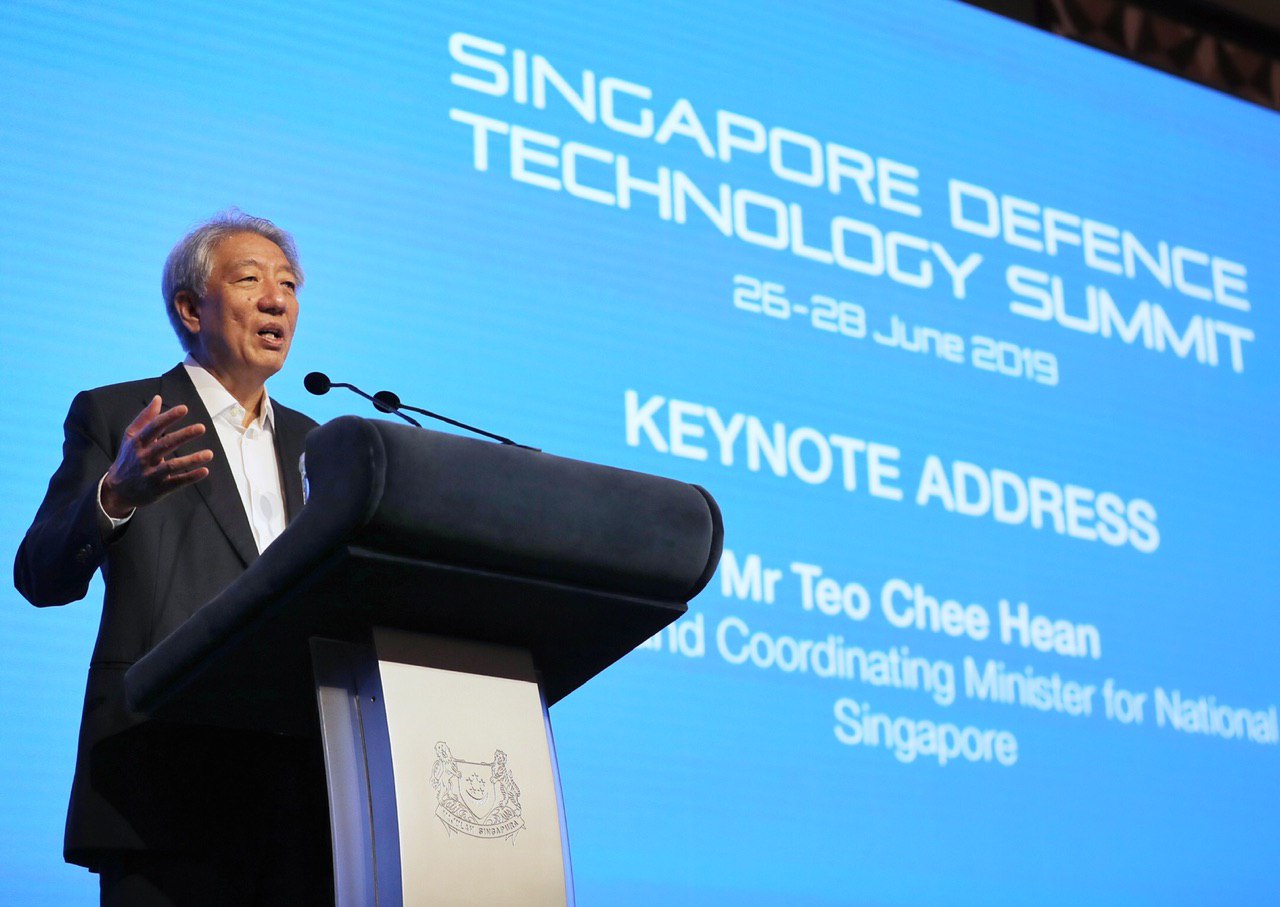Reflect on how to use tech wisely in 'headlong rush' to deploy it: Teo Chee Hean
Sign up now: Get ST's newsletters delivered to your inbox

Senior Minister Teo Chee Hean suggested three questions for discussion for the audience, which had gathered to discuss topics around the theme of proliferation of technology and its implications on defence, security and society.
ST PHOTO: GAVIN FOO
Follow topic:
SINGAPORE - The rise of artificial intelligence, cyber attacks and asymmetric warfare poses challenges to societies that want to be ahead of the game and not be left behind, said Senior Minister Teo Chee Hean on Thursday (June 27).
But in the "headlong rush" to frame responses in terms of how to develop and deploy new technology more quickly, there is also a need to reflect on how well and how wisely technology is being used, he added.
Whether people are prepared to deal with the consequences of the proliferation of such technologies should also be examined, said Mr Teo, addressing about 400 participants in his keynote address at the second Singapore Defence Technology Summit at the Shangri-La Hotel, organised by the Defence Science and Technology Agency.
The delegates include defence technology policymakers, national armament directors, chief technology officers, academics and entrepreneurs from 23 countries.
Mr Teo, who is also Coordinating Minister for National Security, suggested three questions for discussion for the audience, which had gathered to discuss topics around the theme of proliferation of technology and its implications on defence, security and society.
First, how can we be prepared for a world where machines are smarter than humans? Second, how can security be maintained in an increasingly connected world, and third, how to avoid being blindsided by asymmetrical, low-tech warfare when there is a focus on high-tech warfare?
On artificial intelligence (AI), he noted that there were different schools of thought on whether machines can ever be smarter than humans.
While AI will allow machines to learn by themselves and become smarter and learn more, they might not know the difference between right and wrong. Machines might not be able to adapt to uncertainty, or take into account new factors and circumstances, too.
"Do we depend on man or machine to call the shots, especially in a life and death situation?" Mr Teo asked, giving the example of the design of stall protection systems for aircraft.
He said that a machine can be designed to automatically "save" an aircraft and all on board because it can process indicators of an impending stall more quickly, and this could be useful when the pilot is unable to fly.
"But would we rather place our trust in a human pilot because instruments and the machine can go wrong, and the pilot can bring his greater overall awareness, experience and judgment to deal with the situation?"
With an increasingly interconnected world, where people are relying more and more on "smart" devices in their daily lives, more potential vulnerabilities could open up, Mr Teo said.
"We must assume that persistent attackers will find their way in, past our traditional boundary defences. To stay safe, we need systems and processes to protect us from bad actors who are already lurking inside, by seeking them out and acting against them," he said.
Three days ago, he had a look at solutions deployed to protect critical cyber-physical systems such as water treatment plants and power infrastructure from external and internal attacks, using advanced design, augmented reality and AI-based algorithms.
These were being developed under the National Cybersecurity R&D Programme, coordinated by Singapore's National Research Foundation, Cyber Security Agency and other agencies.
There is also a need to depend more on data encryption, with the spectre of "unbreakable encryption" becoming an issue, he said. But he asked whether coming up with new forms of defences can keep pace with attacks, which are becoming more ubiquitous and sophisticated.
In February 2016, United States law enforcement agencies were initially unable to access the encrypted contents of a mobile device belonging to a terror suspect, and were later offered a solution by a vendor at a price.
Even with technological advancements, asymmetric or low-intensity threats are on the rise, Mr Teo noted.
Non-state actors which advocate violent extremism have motivated individuals to undertake attacks an ocean away, create home-made bombs from household items, and use vehicles to mow down pedestrians.
"There are no simple solutions when such everyday items are turned into weapons to strike at ordinary people going about their daily lives. Precisely because of how simple and close-up (they) are to each of us, such threats can have a greater psychological impact throughout society," he said.
Mr Teo added that psychological and information warfare has become more dangerous with the use of fake news and AI-driven deepfakes, which are convincing fake audio and videos, and noted that a proposed law to fight fake news was passed in Parliament last month.
"It will not solve all our problems, but it will allow us... to take action to require corrections to be promptly posted up alongside the falsehood, so that readers can evaluate for themselves the falsehoods purveyed, together with the corrections," he said.
He added that the Government is considering legislation to address hostile information campaigns mounted by foreign actors that threaten national security.

